

How To Write Book Titles The Proper Way: A Complete Guide For Writers
- February 10, 2022
Book titles within essays or papers can be tricky. There are specific rules that are given for how to include a book title in a way that sets it apart from the content of your writing given by the Modern Language Association. However, as with many other things in life, there are exceptions to the rules. This article will guide you through the rules of the writing style guides so that you can include a book’s title in your paper or essay correctly.
How to write book titles:
Style guides and book titles.
When it comes to book titles within text, there are a few different style guides that have rules you can follow, depending on your writing type. The three types that you will encounter most often are; MLA style, Chicago manual of style, and APA. A writing instructor will usually tell you what style guide you are expected to use for a particular essay or paper.
MLA Style Guide
The MLA handbook states that you should always italicize book titles when styling book titles within your text. The exception to this rule are religious texts. You would not italicize the Holy Bible or the sacred books or titles of other religions. Note the following example.
Pam had stayed most of the summer indoors, re-reading her favorite book series. She was already up to Harry Potter and the Philosopher’s Stone , and she didn’t regret not being more active or going outside.
In the above example, the book title is italicized. Fiction titles and nonfiction titles alike must be in italics when within the text.
Series Titles in MLA
In the above example, a book from a series was used. But what if the text had not specified which book from the series Pam was reading? Would it still need to be in italics? The answer is: in this case, yes. In other cases, sometimes.
It’s really not as confusing as it seems. When you are talking about a book series but don’t want or need to include the complete series titles for the purposes of your work, you only have to put words in italics that also appear in the book titles. So, because Harry Potter is part of the title of all of the books in the series, you would italicize his name every time you mention the book.
However, if you were talking about Katniss Everdeen, you would not have to do this, as the book series she is featured in doesn’t use her name in the titles of The Hunger Games series. The same would be true of books like the Nancy Drew books.
Quotation Marks
There are instances in which titles should be placed inside of quotation marks within a paper or essay. This is done when you cite the titles of poems , a chapter title, short stories, articles, or blogs.

So, for example, if you were to write a paper that featured a poem from a book, you would put the book title in italics and the poems cited in quotation marks.
An example of an enduring love poem is “Annabel Lee” from The Complete Tales and Poems of Edgar Allan Poe.
Chapter Title
Another time that quotation marks should be used is when using the title of a chapter. If you are citing a specific chapter of a book, you would enclose the title of the chapter in quotation marks, and the title of the book should be in italics.
The desperation and sadness of a man on death row can be seen in the “Wild Wind Blowing” chapter of Norman Mailer’s The Executioner’s Song.
Short Stories
Short stories are another case. Much like the title of a chapter or poem, in which the title is placed in quotation marks, while the title of the book or collection it is found in is italics. The same can be said for sections, stories, or chapters cited within a literary journal.
Stepping away from his norm of horror and gore, Stephen King writes of trust, love, and regret in his story “The Last Rung on the Ladder,” which can be found in his short story collection Night Shift.
Punctuation Marks
If you are citing a story or title that includes question marks, you need to make sure to italicize the question mark when citing. Keep all punctuation, such as a question mark, comma, ellipses, colon, or exclamation mark, as it is in the original individual books.
If you want a funny and irreverent read, you’ve got to try Are You There, Vodka? It’s Me, Chelsea. Chelsea Handler has done a phenomenal job of being vulgar, relatable, and explaining life from her viewpoint in this hilarious and memorable book.
The Digital Age: Are Book Titles Underlined Anymore?
MLA style used to dictate that a book title should either be in italics or underlined. However, that is no longer the case. As computers started to take over as the major tool used in writing, it became unpopular to underline book titles. Therefore, this rule was dropped from the style guides.
However, it should be mentioned that when handwriting an essay or research paper, many instructors prefer that you underline book titles, as it’s relatively difficult to handwrite italics. If you are in a writing course or a class that is heavy on handwritten work, be sure to ask your instructor or teacher which method they prefer for citing a book title.

How to Come Up with Book Title Ideas
Now that quotation marks, italics, and style guides have been discussed, let’s move on to how you can come up with your own book title. If you’d like a title for your book that sounds interesting and will get a reader’s attention, you may find this article helpful.
Coming up with a good title for your book is a challenging yet essential marketing decision . The right title can make your target audience choose your new book off of the shelf instead of another writer’s work. Your book cover and your book title are quite possibly the most important marketing decisions you will make.
How to Choose a Good Book Title
Certain criteria should be met if you want to have a good book title , and there are specific steps involved in getting there. You may have assumed up until now that titles of books were just spur of the moment decisions made by authors or publishers, but a lot of work goes into writing good titles.
Grab the Reader’s Attention
As a general rule, you want your reader to remember your title and to sound interesting, even without the reader having seen the cover. There are several ways to do this. You can be a little dark with your title, be controversial, provoke the reader, or even be funny.
There are many examples of such works that use memorable and attention-seeking titles. The following are some different titles that are effective and would most likely provoke a reader to grab them from a shelf for closer inspection.
- Burn After Writing (Sharon Jones)
- Love in the Time of Cholera (Gabriel Garcia Marquez)
- Is Everyone Hanging Out Without Me? (Mindy Kaling)
- Are You There, Vodka? It’s Me, Chelsea (Chelsea Handler)
- The Devil Wears Prada (Lauren Weisberger)
- Chicken Soup for the Soul (various authors)
- God Bless You, Dr. Kevorkian (Kurt Vonnegut)
Shorter Titles
If your full title for your book is long, you may end up boring a reader or creating a situation where a reader tries to remember the title of your book, but it’s too long and ends up getting it confused with another book. Although you should always do your best to make sure that there aren’t books by other authors that share a title or have a title similar to your book (more on that in a minute), you don’t want a person to get confused and get the wrong book instead.
Research Your Title Ideas
It’s a good idea to take the titles you have considered for your book and make a list. Then, do your homework. You can use tools like Google Adwords to test out your title to see if there are others like it, or you can simply use any search engine and plug your title ideas into the search bar and see what similar or exact titles of the same words pop up.
Readers are generally busy people. They don’t have the time or the energy to ensure that writers get a title right. They’ll look for the book they are interested in, and if it proves to be too difficult, or if there are other books written that have the same title, they’ll move on to something else.
A writer really has to make sure that they have a title that isn’t going to be ignored, is interesting, isn’t too long, and isn’t too similar to other works.
The same goes for titles of short works within a larger body of work. Short works, like poems or stories, need to have unique titles as well when included in a larger body of work, such as a collection. If stories are similar in nature, be sure to title them differently so that readers will be able to tell them apart, as well.
Leave a Comment Cancel Reply
Your email address will not be published. Required fields are marked *
Save my name, email, and website in this browser for the next time I comment.
Sign up to our newsletter!
Related articles

120 Motivational Quotes About Writing To Inspire A New Writer Like You

How To Register A Kindle On Amazon To Enjoy Your Ebooks In 4 Easy Ways

How To Market A Self-Published Book And Be Profitable In 9 Easy Ways
- Link to facebook
- Link to linkedin
- Link to twitter
- Link to youtube
- Writing Tips
How to Write Book Titles in Your Essays

3-minute read
- 26th May 2023
When writing an essay, you’re likely to mention other authors’ works, such as books, papers, and articles. Formatting the titles of these works usually involves using quotation marks or italics.
So how do you write a book title in an essay? Most style guides have a standard for this – be sure to check that first. If you’re unsure, though, check out our guide below.
Italics or Quotation Marks?
As a general rule, you should set titles of longer works in italics , and titles of shorter works go in quotation marks . Longer works include books, journals, TV shows, albums, plays, etc. Here’s an example of a book mention:
Shorter works include poems, articles, chapters of books, episodes of TV shows, songs, etc. If it’s a piece that’s part of a biggHow to Write Book Titles in Your Essayser work, the piece considered a short work:
Exceptions to the Rule
The rule for writing book titles in italics applies specifically to running text . If the book title is standing on its own, as in a heading, there’s no need to italicize it.
Additionally, if the book is part of a larger series and you’re mentioning both the title of the series and that of the individual book, you can consider the book a shorter work. You would set the title of the series in italics and place the book title in quotation marks:
Punctuation in Book Titles
Do you need to apply italics to the punctuation in a book title? The short answer is yes – but only if the punctuation is part of the title:
If the punctuation isn’t part of the title (i.e., the punctuation is part of the sentence containing the title), you shouldn’t include in the italics:
Find this useful?
Subscribe to our newsletter and get writing tips from our editors straight to your inbox.
Summary: Writing Book Titles in Essays
We hope you’ll now feel confident when you’re writing and formatting book titles in your essays. Generally, you should set the title in italics when it’s in running text. Remember, though, to check your style guide. While the standards we’ve covered are the most common, some style guides have different requirements.
And once you finish writing your paper, make sure you send it our way! We’ll make sure any titles are formatted correctly as well as checking your work for grammar, spelling, punctuation, referencing, and more. Submit a free sample to try our service today.
Frequently Asked Questions
How do you write the title of a book in a sentence.
Set the title of the book in italics unless the book is part of a larger work (e.g., a book that’s part of a series):
When do you use quotation marks for titles?
Place titles of shorter works or pieces that are contained in a larger work in quotation marks:
Share this article:
Post A New Comment
Got content that needs a quick turnaround? Let us polish your work. Explore our editorial business services.
2-minute read
How to Cite the CDC in APA
If you’re writing about health issues, you might need to reference the Centers for Disease...
5-minute read
Six Product Description Generator Tools for Your Product Copy
Introduction If you’re involved with ecommerce, you’re likely familiar with the often painstaking process of...
What Is a Content Editor?
Are you interested in learning more about the role of a content editor and the...
4-minute read
The Benefits of Using an Online Proofreading Service
Proofreading is important to ensure your writing is clear and concise for your readers. Whether...
6 Online AI Presentation Maker Tools
Creating presentations can be time-consuming and frustrating. Trying to construct a visually appealing and informative...
What Is Market Research?
No matter your industry, conducting market research helps you keep up to date with shifting...

Make sure your writing is the best it can be with our expert English proofreading and editing.
Discover top guides, trends, tips and expertise from AIO Writers
How to Write a Book Title in an Essay: A Simple Guide
Julia McCoy

Mastering the art of citation is crucial for academic writing, and one common dilemma writers face is how to write a book title in an essay.
In this blog post, we’ll delve into the ins and outs of citing book titles, exploring different citation styles, and providing practical tips to ensure your essays are not only well-written but also properly referenced.
Whether you’re navigating the nuances of MLA, APA, or Chicago style, we’ve got you covered with clear guidelines and examples to help you confidently write book titles in your next masterpiece.
Let’s get started!
Table Of Contents:
How to write book titles in essays, how to format book citations, writing various types of titles in essays, emphasizing book titles in essays, punctuating and capitalizing book titles, examples of writing book titles in essays, faqs – how to write a book title in an essay.
Writing book titles in essays can be tricky, especially with different style guides like MLA, APA, and Chicago. But don’t worry, I’ve got you covered with some tips and examples on how to quote a book title in your essay.
MLA Style Guide
In MLA style, book titles are italicized, both in the text of your paper and in the Works Cited list.
For example: Toni Morrison’s Beloved is a powerful novel about the lasting impact of slavery.

Similarly, in the style guide of the American Psychological Association, book titles should also be italicized in the text and the reference list.
For instance: In The Catcher in the Rye , Holden Caulfield grapples with the transition from adolescence to adulthood.
Chicago Manual
In Chicago style, book titles are italicized in the text and the bibliography.
Like this: Michael Pollan explores the origins of our food in The Omnivore’s Dilemma: A Natural History of Four Meals .
Regardless of the style guide, there are some general formatting rules to keep in mind.
Titles of books should be underlined or italicized. Titles of stories, essays, and poems are placed in quotation marks.
Refer to the text specifically as a novel, story, essay, memoir, or poem, depending on what it is.
Capitalization Rules
Use capital letters to write the title of a novel.
For example, The Secret Garden by Frances Hodgson Burnett.
Quotation Marks
Titles of stories, essays, and poems are placed in “quotation marks.” This helps differentiate them from longer works like novels or non-fiction books.
Now that we’ve covered the basics, let’s dive into some specifics for different types of titles you might encounter.
Journal Articles
If the book title is part of a larger work, like a journal article, it should be underlined instead of italicized.
Short Stories
Titles of short stories should be placed in quotation marks.
For example: “The Lottery” by Shirley Jackson.
Chapter Titles
When referencing a chapter title, enclose it in quotation marks.
For instance: “The Boy Who Lived” from Harry Potter and the Sorcerer’s Stone .
Article Titles
Article titles, like those found in English-language newspapers or magazines, should also be placed in quotation marks.
For example: “Why We Crave Horror Movies” by Stephen King.
Newspaper Titles
Italicize the names of newspapers, like The New York Times or The Wall Street Journal .
The names of websites should generally be italicized, such as The Huffington Post or BuzzFeed .
Book Series
When referring to a book series as a whole, italicize the name of the series. Individual books within the series should also be italicized.
For example: the Harry Potter series by J.K. Rowling, which includes titles like Harry Potter and the Chamber of Secrets .
Sometimes you want to draw extra attention to a book title in your essay. Here’s how to do it effectively.
When to Italicize
As a general rule, italicize the titles of longer works such as books, edited collections, movies, television series, documentaries, or albums.
When to Use Quotation Marks
Shorter works like poems, articles, book chapters, songs, TV episodes, or other shorter works should be placed in quotation marks.
Exceptions to the Rules
As with any rule, there are exceptions. Some style guides prefer underlining to italics. Others may recommend using quotation marks around the title and italicizing or underlining the name of the newspaper or magazine it appears in.
When in doubt, always check with your instructor or the publication you’re writing for.
Punctuation and capitalization are key when it comes to book titles in essays. Get it wrong, and your writing won’t look as polished.
Using Question Marks
If a book title ends with a question mark or exclamation point, include it in the italics.
For example: Do Androids Dream of Electric Sheep? by Philip K. Dick
In general, capitalize the first word and all major words (nouns, pronouns, verbs, adjectives, adverbs, and some conjunctions).
Don’t capitalize articles, prepositions, or conjunctions unless they’re the first or last word.
Some style guides recommend capitalizing prepositions five letters or longer.
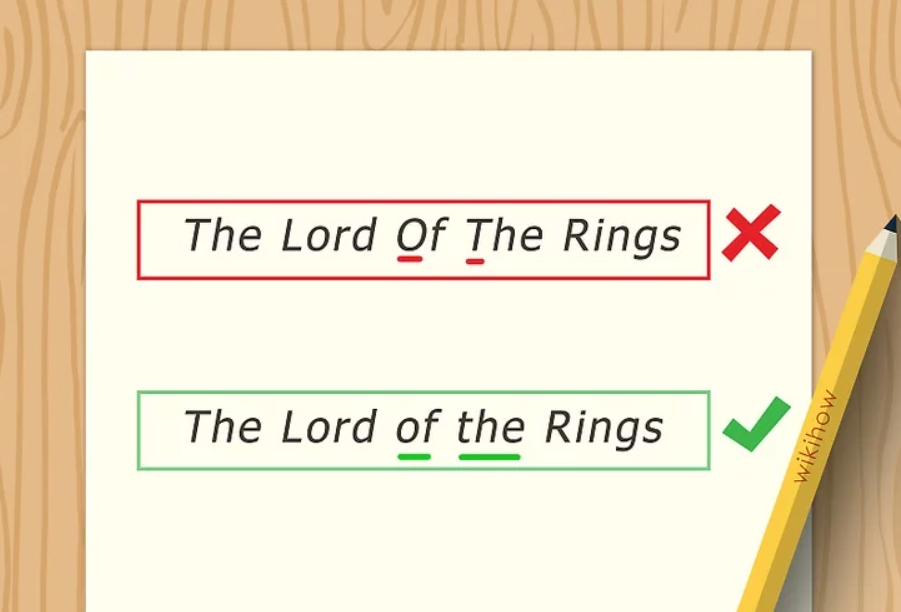
Title case is the most common form of title capitalization and is found in all four major title capitalization styles (AP, APA, MLA, and Chicago).
Capitalize the first word in the title, the last word in the title, and all “major” words in between.
Proper Nouns
Always capitalize proper nouns, such as the names of people, places, organizations, or other proper nouns in a book title.
For example: Harry Potter and the Order of the Phoenix by J.K. Rowling.
Let’s look at some examples of how to write book titles in various situations.
Classic Literature
When referencing a classic work of literature, italicize the book’s title in the text of your paper.
In the Works Cited entry, include the author’s full name, the title of the book (in italics), the publisher, and the year of publication.
For example:
Austen, Jane. Pride and Prejudice . Penguin Classics, 2002.
Contemporary Literature
For a contemporary work, follow the same format in the text of your essay.
In the Works Cited entry, include the author’s name, book title (in italics), publisher, year of publication, and medium of publication (print, web, etc.).
Here’s an example:
Whitehead, Colson. The Underground Railroad . Doubleday, 2016. Print.
Non-Fiction Works
When citing a non-fiction book, use the same format as you would for a fictional work. Italicize the book title in the text and the Works Cited entry. Include the author’s name, book title (in italics), publisher, year of publication, and medium of publication.
For instance:
Krakauer, Jon. Into the Wild . Anchor Books, 1997. Print.
How do you write the title of a book in a sentence?
In sentences, capitalize the first word and proper nouns. If it’s central to your point, italicize it.
Is a book title italicized or in quotes?
Book titles are usually italicized. Quotes are for shorter works like articles or poems.
How do you write a book title in a handwritten essay?
If handwritten, underline book titles instead of using italics to highlight them.
So there you have it – your complete guide to how to write a book title in an essay. By following these simple rules for MLA, APA, and Chicago style, you’ll be able to format your book titles correctly every time.
Remember, the key is to be consistent and pay attention to the details. Whether you’re italicizing, underlining, or using quotation marks, make sure you’re applying the rules consistently throughout your essay.

Written by Julia McCoy

UNLOCK YOUR POTENTIAL
Long headline that highlights value proposition of lead magnet.
Grab a front row seat to our video masterclasses, interviews, case studies, tutorials, and guides.
What keyword do you want to rank for?
Discover RankWell ® your SEO best friend
Our proprietary suite of SEO tools, aka RankWell®, offers marketers real-time, deep SEO insights. From keyword ranking difficulty scores to audits on improving your content, our full-service SEO tool suite is your content's best friend.
Get a free topic report that has every insight you need to outrank the competition.
By clicking Sign Up, you agree with our Terms and Conditions.
Writing A Book Title In Your Essay – The Right Way
Table of contents
- 1 APA Style: How to Write Book Titles in Essays
- 2 APA Style Essay: Writing The Name of The Author
- 3 MLA Style Essay: Citing a Book Title
- 4 Chicago Style Essay: Writing the Book Title
- 5 Writing Various Types of Titles
- 6 Should We Underline or Italicize Book Titles?
When you are writing an academic essay , the book title and author’s name should be written in italics. However, if the book title is part of a larger work (such as a journal article), it should be underlined instead. So, you’re wondering how to write a book title in an essay?
Writing an essay with a book title can be tricky, particularly because each style guide has its own formatting rules for including titles in the main text. Whether you are using MLA, APA, Chicago, or Harvard referencing styles, you will need to consider how to properly format the book title. For more complicated literature-based assignments, seeking assistance from an admission essay writing service may be wise, as they specialize in writing essays that incorporate academic sources.
In this article, we will explore how to write both titles in an essay properly so that you avoid any mistakes!
APA Style: How to Write Book Titles in Essays
When writing an essay, you must follow the style guide provided by your professor. Some teachers may require you to use APA style and others MLA style. There are some rules on how to quote a book title in an essay. You should use italics and quotation marks when writing book titles in essays. For example: “ The Rape of Nanking: The Forgotten Holocaust of World War II. “
When writing a book title in APA Style , you should be aware of these rules:
Write the book title in italics and place it after the author’s name, which is presented in reverse order (last name first).
Use quotation marks around the headline of a chapter or article.
Capitalize proper names that are not common nouns (names of people, places, organizations), but do not capitalize words such as “and,” “or,” “to,” or “and/or.”
Do not capitalize prepositions that appear at the beginning of titles if they are followed by an article (e.g., “A,” “An”), but do capitalize prepositions at the beginning of titles if they are not followed by articles (“Of”).
The first word of the headline should be capitalized, as well as any other words after a colon or hyphen. For example, “The Elements of Style: Grammar for Everyone” or “Theories of Personality: Critical Perspectives.”
Capitalize proper names and words derived from them (e.g., the names of people, places, organizations), except proper nouns used generically (e.g., ‘a bed’).
APA Style Essay: Writing The Name of The Author
You should always use the full name and surname of the author in your APA essay because this will give proper credit to the writer. If you do not mention the author’s full name, people may not know who wrote what and will think you copied it from somewhere else. This will cause lots of problems for you and your reputation as well.
Make sure that all authors’ names appear in the same format in each entry. For example, if one person’s surname is Smith and another’s is Jones, both have first names starting with “J.” It may seem like they are being cited as different people when they’re actually written differently from each other on separate pages in your paper.
To write an APA essay without any issues, there are certain rules that you need to follow while writing an author’s name in APA essay:
- Use only one author’s name in your paper unless there are multiple authors
- If there are multiple authors, then use both their last names followed by the initials of their first names
- Only use initials of first names when there are three or more authors; otherwise, use full names with their last names
Example: Johnson, M.C., Carlson, M., Smith, J. N., & Hanover, L. E.
MLA Style Essay: Citing a Book Title
Now let’s discuss how to mention a book in an essay. The MLA Handbook for Writers of Research Papers, 7th edition, published by the Modern Language Association (2014), contains detailed rules about how to cite a book title in an essay.
The following guidelines will instruct you on how to refer to a book in an essay in MLA style :
- List your sources at the end of your paper, before the works cited page or bibliography.
- Use italics for titles of books, magazines, and newspapers, but not for articles within those publications, which should be placed in quotation marks.
- Include all relevant book information under two categories: “title” and “author.” In the former category, include the work’s title and its subtitle if there is one; do this even if neither appears on your title page (see below). In the latter category, include only primary authors who have written or edited an entire book; if there are multiple contributors, you should cite them separately under each.
The general format for citing the title of the book in an essay is as follows:
Author’s last name, first initial (Date). Title of Book with Subtitle if there is one. Publisher Name/Location of Publisher; Year Published
Chicago Style Essay: Writing the Book Title
One of the most important things to remember when writing in Chicago style is how to write the title of a book in an essay. To write a good book title in an essay, you should follow these steps:
- Write it at the beginning of your sentence.
- Capitalize it just like any other noun or proper noun.
- Put a comma after the title unless it’s an introductory clause or phrase. For example: “The Firm,” by John Grisham (not “by”) and “The Catcher in the Rye,” by J.D Salinger (not “and”).
- In addition to the book’s name, punctuation marks should also be italicized.
For example: Harry Potter and the Half-blood Prince: Children’s Edition
Writing Various Types of Titles
Now that we covered how to write a book title and author in an essay, it’s time to look at some different types of titles. When you write a book title in an essay, several things must be considered. Whether it’s a book, series, chapter title, editor’s name, or author’s name, how you write it depends on where it appears in your paper.
Here are some key rules for writing headings for novels:
- Use capital letters to write the title of the novel. For example, The Secret Garden by Frances Hodgson Burnett .
- Use italics and capital letters to write the name of the author and his/her other works mentioned in a book title—for example, Jane Austen’s Pride and Prejudice (1813) .
You should use quotation marks when writing headings of short title poems, articles, and stories.
However, before deciding which format to use, it is important to understand the main idea you want to express in your essay. Additionally, you could use essay papers for sale to help you accomplish your goal of writing an essay effectively.

Should We Underline or Italicize Book Titles?
It depends on which style guide you use. The Modern Language Association and Chicago Manual of Style both suggest using italics, while the American Psychological Association suggests using quotation marks with a few exceptions.
The way you write the title of a book in an essay is different depending on the instructions you were given. For example, if you’re writing an essay in APA style, use quotation marks around the book’s name. If you’re writing for MLA or Chicago style , however, italicize the book’s name instead. If you’re writing a handwritten essay instead of using a computer, capitalize and underline the book’s name.
Readers also enjoyed

WHY WAIT? PLACE AN ORDER RIGHT NOW!
Just fill out the form, press the button, and have no worries!
We use cookies to give you the best experience possible. By continuing we’ll assume you board with our cookie policy.
How to Write Book Titles in Essays: APA, MLA, Chicago Styles
It’s your practical and up-to-point guide on how to write a book title in an essay. You’ll get the formatting rules and examples for citing book and author names in academic papers.
We’ve covered the top three citation styles: APA, Chicago, and MLA.
How to Write the Title of a Book in an Essay
First, remember the general rules of citing book names in academic works.
Here’s how to cite books in essays :
- Use capitalization. Every word of a book’s name goes in the title case, except prepositions, articles, and coordinating conjunctions.
- Use italics for longer and independent works. Use double quotations for shorter ones (poems, articles, book chapters, or play acts and scenes).
- Use single quotations for a book’s title within another title. (When citing monographs about literary works, for example.)
While capitalization rules depend on the citation style, some general tips have a place to be. Please, no capitalization for:
- Articles: a, the (unless the book title begins with it)
- Coordinating conjunctions and prepositions: of, and, or, but, for, to, nor, in, so (unless the book title begins or ends with it)
Subordinating conjunctions (although, unless, because, if) go in capital letters.
How to Write a Book Title in an Essay: APA
APA (American Psychological Association) is the most popular style for citing academic works. It’s common for the social sciences like Education, Psychology, Sociology, and others. The current edition: 7th (2019).
Book titles in APA stand for:
- Italics. (If a book name includes any punctuation, italicize it too.)
- Capitalization. (Capitalize all words longer than four letters , regardless of the part of speech. Also, use capital letters for two-part words and those coming after a dash or a colon.)
- Double quotations instead of italics. (When citing a short work like an article or a poem; when citing a book chapter or when the book is a part of an anthology.)
For example:
The Lord of the Rings but “The Fellowship of the Ring” (The latter is part of the trilogy.)
Related: How to Cite a Movie in APA Format
How to Write the Name of a Book in an Essay: Chicago
The Chicago Manual of Style is a guide by the University of Chicago. It’s common for fields like History, Fine Arts, and Business. The current edition: 17th (2017).
How to format book titles in Chicago:
- Italicize longer and independent works; put shorter ones in double quotations.
- Use italics for punctuation within a title.
- Capitalize all words except articles (a, the) and ALL prepositions or conjunctions (regardless of length).
For example:
In George Orwell’s 1984 , the author presents a dystopian society characterized by pervasive government surveillance and the suppression of individual freedom. The harrowing events in “Chapter 2,” where Winston Smith begins to rebel against the Party by starting a forbidden diary, mark a pivotal moment in the novel’s exploration of resistance against totalitarianism.
The style resembles the MLA format, but it’s flexible, allowing you to “break the rules if necessary.”
How to Write a Book Title in an Essay: MLA
MLA format stands for the Modern Language Association. It’s common for humanities like Literature, Culture, Linguistics, etc. The current edition: 8th (2016).
How to format books in MLA:
- Italicize all words, including punctuation and those of two parts or going after colons and hyphens.
- Capitalize all words except articles (a, the) , prepositions, and short conjunctions within a book title.
- Use double quotations instead of italics when writing a book chapter or a part of a book series.
In Little Women , Beth March dies in Chapter 40, “The Valley of the Shadow.”
Formatting Book Author Names in Papers
Use the author’s full name (first and last) to format it in your essay for proper credit.
If a book has two authors, use both last names and initials. For works with three or more authors, use the last name of the first one and add “et all.”
No need to italicize author names in papers.
Why Properly Cite Book Titles in Essays
The short answer:
You won’t get a high grade for an essay. Formatting blunders count as mistakes.
The longer answer:
- You prove writing skills and an understanding of the rules in academia.
- Your papers maintain consistency. It’s critical to stick to criteria to prevent confusion. The consistent format for book headings also serves to better scannability and readability.
- You learn to cite different types of references for your future projects.
Do you italicize book titles?
Yes, you put book titles in italics. Please italicize long and stand-alone works: books, movies, webpages, reports, or music albums. Shorter works’ titles (articles, essays, poems, songs, or book chapters) come in quotations. (1)
Do you underline book titles?
Underlining book titles is an outdated practice. Some still use it in handwritten essays, but it’s not a must-follow rule. Neither APA nor MLA (or Chicago) mentions underlining book names in academic papers.
How to use book title capitalization in texts?
Capitalize every word in a book’s title. Exceptions are articles (a, the), prepositions, and short (three or fewer letters) conjunctions in mid-titles.
Are books italicized in all formatting styles?
Yes, book titles come in italics in all styles: APA, MLA, and Chicago. When citing book chapters or a book as a part of a series, use quotation marks instead.
How to write a book author in an essay?
Use the author’s full name when citing their book in your papers. For works with several authors, mention their last names and initials. Unlike book titles, author names come in standard formatting with no italics.
References:
- https://english.csuci.edu/resources/essay-writing-essentials.htm
- Essay samples
- Essay writing
- Writing tips

Recent Posts
- Writing the “Why Should Abortion Be Made Legal” Essay: Sample and Tips
- 3 Examples of Enduring Issue Essays to Write Yours Like a Pro
- Writing Essay on Friendship: 3 Samples to Get Inspired
- How to Structure a Leadership Essay (Samples to Consider)
- What Is Nursing Essay, and How to Write It Like a Pro
📚 Mastering the Art of Writing a Book Title in an Essay
Mastering the art of writing a book title in an essay.
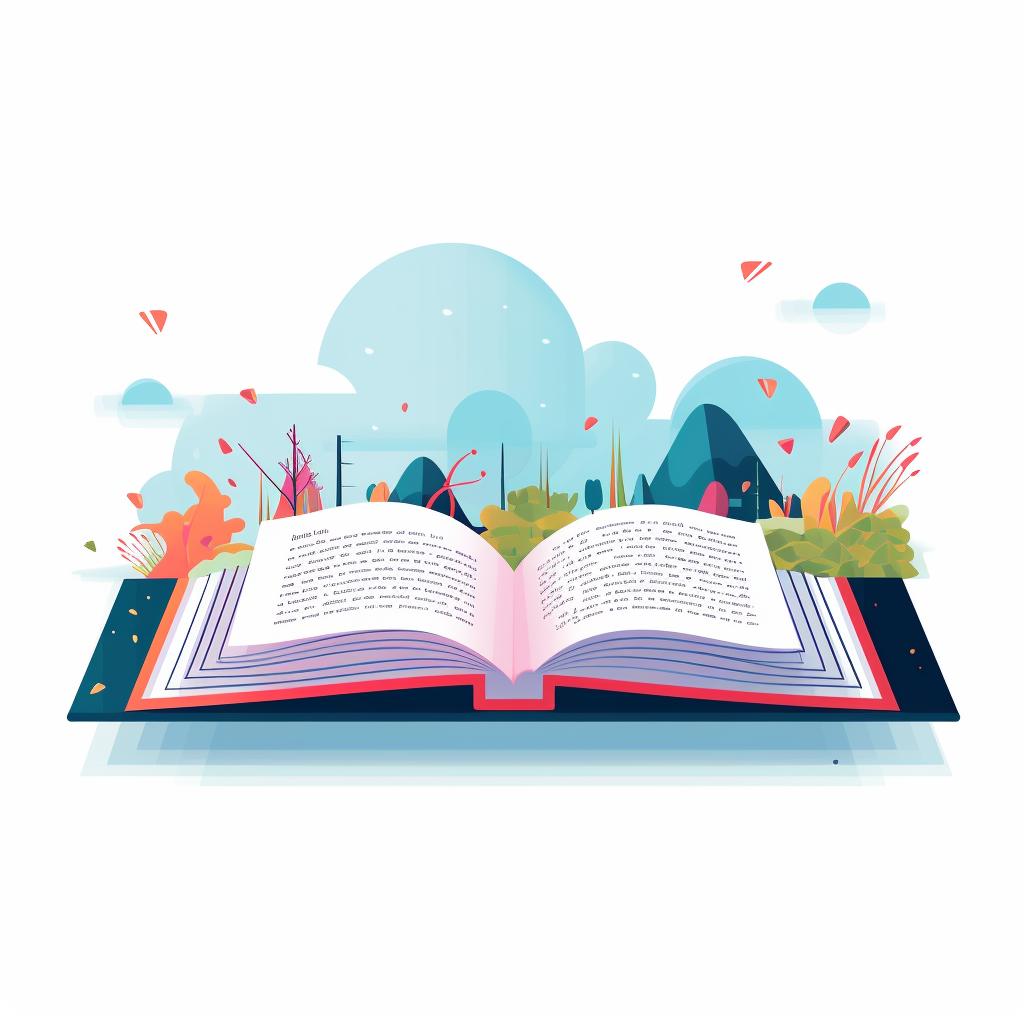
Why is Book Title Formatting Important?
Understanding the rules, common mistakes to avoid, additional resources.
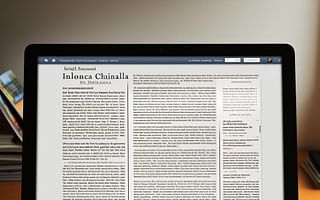
Should You Indent When Starting a New Paragraph in MLA Format?
Share superior formatting, people also asked.

How should you format an essay that includes a title and a subtitle?

How do you write a title in MLA format?

How do you cite the title of a book in an essay?
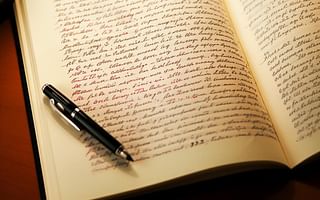
How should you represent a book title in a handwritten essay?

Is it appropriate to italicize a book title in a paper?
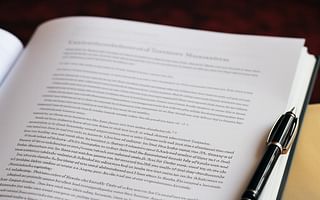
Should a book title be underlined or italicized when writing an essay?

Is it necessary to italicize book titles every time they are mentioned in an essay?

How should a book title be written in a personal note?
Superior formatting articles.

The Power of a Strong Title: How to Write a Book Title in an Essay

Unlocking Creativity: How to Write a Book Title in an Essay for Maximum Engagement
Login to superior formatting.
How to Write A Book Title In Your Essay
Writing an essay can be an intimidating task, especially when it comes to citing sources. Properly citing book titles is an essential part of academic writing, and failure to do so can result in loss of marks. In this article, we’ll take a comprehensive look at how to write a book title in your essay and provide some practical tips to ensure that you get it right.
Understanding the Importance of Properly Citing a Book Title
Before we dive into the details, it’s vital to understand why book titles are such an essential part of academic writing. The primary purpose of citations is to give credit to the original source of information you use in your work. This not only avoids plagiarism but also adds credibility to your arguments as it demonstrates that you have conducted thorough research.
Moreover, citing a book title accurately is crucial to avoid any confusion or ambiguity in your writing. By providing a precise reference to the book you used, you enable your readers to locate the exact information you are citing, rather than searching through multiple sources to find the right one.
Why Book Titles Matter in Essays
Book titles play a crucial role in your essay, serving as a reference point for your readers to identify the source of information. Properly citing book titles also reflects your professionalism and attention to detail as a writer. This ultimately contributes to a more persuasive and compelling piece of writing.
Furthermore, citing book titles accurately also helps you avoid any potential legal issues. Using someone else’s work without proper attribution can lead to copyright infringement and legal action against you. Therefore, it’s essential to give credit where it’s due and cite your sources correctly.
The Role of Citations in Academic Writing
As mentioned earlier, citations are not just a formality; they serve a critical purpose in academic writing. By acknowledging the work of others, you are providing evidence that supports your argument, enhancing the credibility of your work. Additionally, citations also provide a way for readers to locate the source of information in the event that they need to cross-reference or verify your claims.
Moreover, citations can also help you build on the existing body of knowledge in your field. This not only adds depth to your writing but also shows your readers that you are well-versed in the latest developments in your field.
Properly citing book titles is a fundamental aspect of academic writing. It not only helps you avoid plagiarism and legal issues but also adds credibility to your work and contributes to a more persuasive and compelling piece of writing. So, make sure to give credit where it’s due and cite your sources accurately.
Different Citation Styles and Their Rules
When writing an essay or research paper, it is important to give credit to the sources you have used. This is where citation styles come in. There are multiple citation styles that you can use when citing book titles in essays. The most popular ones are APA, MLA, Chicago/Turabian, and Harvard referencing style. Let’s take a look at each of them in more detail.
APA (American Psychological Association) Style
APA style is commonly used in the social sciences such as psychology, sociology, and education. When citing book titles using APA style, you need to italicize the title and capitalize only the first word of the title, the first word of any subtitle, and any proper nouns. For example, if you were citing the book “The Psychology of Human Misjudgment” by Charlie Munger, your citation would look like this:
Munger, C. (2019). The psychology of human misjudgment . New York, NY: W.W. Norton & Company.
MLA (Modern Language Association) Style
MLA style is primarily used in the humanities such as literature, languages, and cultural studies. When citing book titles using MLA style, you need to italicize the title and capitalize all words in the title except conjunctions, articles, and prepositions. For example, if you were citing the book “The Great Gatsby” by F. Scott Fitzgerald, your citation would look like this:
Fitzgerald, F. Scott. The Great Gatsby . Scribner, 2004.
Chicago/Turabian Style
Chicago/Turabian style is typically used in the humanities, history, and social sciences. When citing book titles using this style, you have the option of italicizing the title or placing it in quotation marks. You should also capitalize the first letter of the first word and any subsequent important word in the title. For example, if you were citing the book “The Origin of Species” by Charles Darwin, your citation would look like this:
Darwin, Charles. The Origin of Species . London: John Murray, 1859.
Harvard Referencing Style
Harvard referencing style, also known as author-date referencing, is often used in the sciences and social sciences. When citing book titles using Harvard style, you need to italicize the title and capitalize the first letter of the first word and any subsequent important word in the title. For example, if you were citing the book “The Structure of Scientific Revolutions” by Thomas Kuhn, your citation would look like this:
Kuhn, T. (2012). The Structure of Scientific Revolutions . Chicago, IL: University of Chicago Press.
It is important to note that each citation style has its own specific rules and guidelines. It is important to choose the appropriate citation style for your discipline and to follow the rules consistently throughout your paper. By doing so, you will ensure that your work is properly cited and that you are giving credit where credit is due.
Formatting Book Titles in Your Essay
Now that you have a good understanding of the different citation styles, let’s take a closer look at how to format book titles within your essay.
When you are writing an essay, it is essential to format the book titles correctly. Proper formatting not only helps you avoid plagiarism, but it also makes your work look professional and polished. In this article, we will discuss the different capitalization rules, italics, underlining, and quotation marks, and how to handle subtitles and edition numbers.
Capitalization Rules for Book Titles
Most citation styles have specific rules for capitalizing book titles. As a general rule, it is essential to capitalize the first word of the title, the first word of any subtitle, and any proper nouns. Proper nouns include the names of people, places, and things that are specific and unique. However, specific styles may use different capitalization conventions, so it’s always important to refer to the style guides before formatting your work. By following the capitalization rules, you can ensure that your essay looks professional and is easy to read.
Italics, Underlining, and Quotation Marks
When formatting book titles, you have three options: italicize, underline, or place them in quotation marks. While most citation styles prefer the use of italics, you may find that your professor or institution requires a different style. It’s always important to clarify any specific requirements before submitting your work. Italicizing the title of a book makes it stand out and helps the reader to identify it easily. Underlining and quotation marks are used less frequently but may be required in certain situations.
Handling Subtitles and Edition Numbers
When citing a book with a subtitle or edition number, it’s essential to include both the title and the subtitle or edition number. You can separate the title and subtitle with a colon, and for the edition number, use the appropriate abbreviation (e.g., 2nd ed.). Including the subtitle and edition number helps the reader to identify the specific version of the book that you are referencing. It also shows that you have taken the time to research the book thoroughly.
Incorporating Book Titles in Your Essay Text
Knowing how to format book titles using the appropriate citation style is an essential skill for any academic writer. However, simply knowing how to format the title is not enough; you also need to know how to incorporate it effectively into your essay text.
Introducing the Book Title in Your Essay
Introducing the title of a book in your essay can be tricky, especially if you are not familiar with the specific citation style you are using. In general, it is essential to use the correct formatting to ensure that your essay is both professional and easy to read. For example, in MLA style, you should italicize the title, whereas in Harvard style, only the first letter of the first word and any subsequent important word should be capitalized. It is also important to include the author’s name and the publication date in your introduction to provide context for your reader.
When introducing a book title in your essay, you can use a variety of techniques to make it stand out. For example, you could use bold or underline formatting, or you could place the title in quotation marks. Whatever technique you choose, be sure to use it consistently throughout your essay.
Using Parenthetical Citations for In-Text References
Parenthetical citations are an essential part of academic writing as they help to identify the original source of information. When using parenthetical citations to cite a book title, it is crucial to include the author’s last name and the page number in parentheses. For example: (Fitzgerald, 2004, p. 37).
When citing a book title in your essay, it is important to remember that you should only include the page number if you are directly quoting from the book. If you are paraphrasing or summarizing information, you do not need to include the page number.
Creating a Works Cited or Bibliography Page
Finally, when citing book titles in your essay, it’s essential to create a Works Cited or Bibliography page. This page lists all the sources you used in your work and includes the author’s name, title, publication date, publisher, and location.
The Works Cited or Bibliography page is typically located at the end of your essay, and it should be formatted according to the specific citation style you are using. Be sure to double-check your formatting and citations to ensure that they are accurate and consistent.
Final Thoughts
Citing book titles in your essay may seem like a small detail, but getting it wrong can result in significant consequences. By following the rules and guidelines outlined in this article, you can ensure that your citing is accurate, and your essay is professional and credible. Remember always to clarify any specific requirements with your professor or institution to avoid any confusion
Frequently asked questions about writing an essay
What is the difference between an essay and a report.
An essay is typically shorter and has a narrower focus than a report. An essay is usually written in response to a question or topic, and it presents an argument, opinion or point of view. A report, on the other hand, is often longer and provides more detailed information on a particular topic.
How do I write a good introduction for an essay?
Your introduction should include a brief overview of the main points you will be discussing in your essay. It should also include a thesis statement, which is a single sentence that summarises your argument.
How do I write a good conclusion for an essay?
Your conclusion should summarise the main points of your argument, and should leave the reader with a clear understanding of your position. It should also include a brief restatement of your thesis statement.
👋 Hi! I’m your smart assistant Amy!
Don’t know where to start? Type your requirements and I’ll connect you to an academic expert within 3 minutes.
How to Write A BOOK Title In An Essay

Writing a book title in an essay can be confusing. But it is necessary for the credibility and clarity of the write-up. Plus, each writing style has its own rules for formatting titles. Hence, doing such an activity could be a real pain for the students.
Don’t worry, as you are in the right place! Since this interesting article focuses on guiding you about how to write a book title in an essay accurately. So, read it thoroughly before you search for a professional paper writing services provider.
Table of Contents
Understanding Formatting Guidelines
The first step in learning how to write book name in essay is to learn the basics. It means you need to get comfortable with different formatting guidelines. Let’s begin with the style guides.
Different style guides
When writing essays for college , it’s important to know the rules for formatting book titles. The three most popular style guides are MLA, APA, and Chicago.
In MLA format , you should usually italicize book titles. You can also put them in quotation marks when a type of work demands.
For example, a book title like “To Kill a Mockingbird” would be italicized: To Kill a Mockingbird .
However, a chapter title within a book would be placed within quotation marks. For example, “The Ewell Family.”
In APA style , the first word of book titles is capital.
For example, a book title like “The Catcher in the Rye” would be written as The catcher in the rye
Chicago Style
Chicago style demands a book title to be in italics or quotation marks. It is very similar to the MLA style. But Chicago style gives you a bit more leeway to use italics or quotation marks. It’s best to stay consistent with what you pick throughout your essay when using the Chicago style.
Consistency within the Essay
You must be consistent when including the title of a book in an essay. Figure out what style guide you must follow and ensure you stick with it. That means all the book titles you mention should look the same.
For example, if you choose to italicize book titles according to MLA style. Ensure that all book titles in your essay are italicized consistently. Avoid mixing italicization with quotation marks or using different formatting styles within the same essay.
Inconsistency in formatting can confuse readers and undermine the professionalism of your work. Paying attention to detail and maintaining consistency will contribute to your essay’s overall clarity and readability.
Determine the Appropriate Style Guide to Follow
To determine the appropriate style guide to follow for formatting book titles in your essay, consider the following:
Assignment Requirements
See if your teacher or the instructions for the assignment mention a certain style to go by. Stick to that, if they do, to ensure everything is consistent, and you meet the expectations.
Academic Discipline
Your field of study can affect which style guide you should use. For example, humanities and literature students usually use MLA style, while social sciences usually use APA style. It’s important to know what’s typical in your discipline to choose the right guide.
Formatting Book Titles in MLA Style
Humanities and liberal arts disciplines use MLA writing rules. In MLA style, book titles are usually in italics like in APA style. But there can be variations in capitalization and punctuation. Let’s explore each aspect in detail with examples:
In MLA style, book titles are put in italics to make them stand out from the rest of the text.
Titles of shorter works, such as articles or chapters, are enclosed in quotation marks.
Example 1: Italicized Book Title
Fitzgerald, F. Scott. The Great Gatsby .
Example 2: Book Chapter (In Quotation Marks)
Smith, John. “The Art of Persuasion.” Essays on Rhetoric.
Capitalization
In MLA style, follows the title case. It means keep the first letter of each word capital. Capitalize articles, conjunctions, and prepositions only if they are the first or last words in title.
Example 3: Correct Capitalization
Lee, Harper. To Kill a Mockingbird.
Punctuation
In MLA style, there should be no special punctuation like colons or periods between the main title and any subtitles. However, if the book’s title includes a subtitle, a colon should separate it from the main title.
Example 4: Book Title with Subtitle
Gladwell, Malcolm. Outliers: The Story of Success.
Edition and Volume Numbers
To refer to a certain book edition, add the edition number after the book title. If the book is part of a multi-volume work, indicate the volume number after the title as well.
Example 5: Edition and Volume Numbers
Johnson, Mary. Chemistry in Focus. 2nd ed.
Smith, Adam. The Wealth of Nations. Vol. 1.
Translated Titles
If the book you are citing is translated from another language, include the original title and the translator’s name in the citation.
Example 6: Translated Title
Kafka, Franz. The Metamorphosis. Translated by David Wyllie.
It’s important to remember that MLA style is always changing and being updated. So always refer to the latest edition of the MLA Handbook or your institution’s writing guidelines.
Formatting Book Titles in APA Style
Usually the social sciences disciplines use APA (American Psychological Association) style. Let’s look at how you must consider capitalization, punctuation and italics in this writing style.
Just capitalize the first word of any subtitles and proper nouns.
All other words, such as articles (a, an, the), conjunctions (and, but, or), and prepositions (in, on, at), are in lowercase.
Example 1:
“The Power of Habit: Why We Do What We Do in Life and Business”
In APA style, book titles are italicized to distinguish them from the rest of the text.
Do not italicize titles of shorter works, such as articles or chapters. Just enclose them in quotation marks.
Example 2: Italics
Here’s an example of an italicized book title:
The Catcher in the Rye
In APA style, there should be a colon (:) between the main title and any subtitle.
When citing a book title within the text of your paper, use title case and italicize it.
When including book titles in your reference list, use sentence case and italicize it.
Example 3: Punctuation
Here’s an example of proper punctuation and citation within the text and reference list:
In-text citation
According to Smith (2019), The Theory of Everything provides an in-depth analysis of astrophysics.
Reference list citation
Smith, J. (2019). the theory of everything . Publisher.
Include the edition number in parentheses right after the book title when a book has a specific edition.
If a book is part of a multi-volume work, you can also indicate the volume number after the title.
Example 4: Parenthesis
Here are examples of how to format book titles with edition and volume numbers:
Edition Number
Johnson, M. (2022). Chemistry in Focus (2nd ed.).
Volume Number
Smith, A. (2021). History of the United States (Vol. 3).
Include the translator’s name in square brackets if you cite a translated book.
Example 5: Translated Thesis
Here’s an example of how to format a translated book title:
Kundera, M. (1984). The Unbearable Lightness of Being [Original title: Nesnesitelná lehkost bytí].
Translated by M. Henry.
Formatting Book Titles in Chicago Style
The Chicago Manual of Style is mostly used in the humanities and social sciences disciplines. Chicago style follows two systems, namely Author-Date System and the notes and bibliography system. Let’s explore both of them.
Author-Date System
In the author-date system, you include:
- In-text citations with the author’s last name
- The publication year
- A corresponding entry in the reference list
Italicization
In the author-date system, book titles are italicized. It makes them Distinguish from other elements in the citation.
Chicago style uses a title case for book titles in the author-date system. It means the first letter of the title, subtitles, and any major words are capitalized.
There should be a period at the end of the full book citation in the reference list.
Example 1: In-Text Citation
Example 2: Reference List Citation
Smith, John. 2019. The Theory of Everything . Publisher.
Notes and Bibliography System
You use footnotes or endnotes in the notes and bibliography system for in-text citations and a bibliography for the full list of references.
Similar to the author-date system, book titles are italicized in the notes and bibliography system.
In the notes and bibliography system, the Chicago style uses headline-style capitalization for book titles. It means that the first letter of the first and last words of the title are capitalized.
Put a period at the end of each full bibliographic entry in the notes and bibliography system.
Example 3: Footnote/Endnote Citation
John Smith, The Theory of Everything (Publisher, 2019), 25.
Example 4: Bibliography Citation
Smith, John. The Theory of Everything . Publisher, 2019.
You may include the edition number after the title, and for multi-volume works, the volume number after the title.
Example 5: Edition Number
Johnson, Mary. Chemistry in Focus . 2nd ed.
Example 6: Volume Number
Smith, Adam. The Wealth of Nations . Vol. 1.
For translated works, include the original title and the translator’s name in the citation.
Example 7: Translated Title
Kafka, Franz. The Metamorphosis . Translated by David Wyllie.
Citation of Book Titles in Other Situations
Let’s highlight some unusual circumstances of including a title of book in essay. Starting with:
Book titles within quotations
If you’re citing a direct quote from a book in your essay, you may need to put the book title in quotes. Generally, you should use double quotation marks for this.
For example:
According to Mark Twain, “The secret of getting ahead is getting started.”
In the novel 1984, George Orwell explores the theme of government surveillance through the famous line, “Big Brother is watching you.”
By using double quotation marks, you indicate that the words within the quotation marks are taken directly from the book.
Book Titles in Footnotes or Endnotes
In academic writing, footnotes or endnotes can be added to give extra info or credits. When including book titles, how you format them depends on the citation style you’re using.
In Chicago Style, book titles in footnotes or endnotes should usually be italicized or in quotation marks.
For Example:
Jane Austen, Pride and Prejudice (New York: Penguin Classics, 2002), 45.
Harper Lee, To Kill a Mockingbird , (New York: Harper Perennial, 2006), 77.
Handling Foreign language book titles
Follow these rules for citing a book in a foreign language. You should keep the original language title, especially if it’s a popular work.
Italicize the foreign language book title following the same guidelines as you would for an English book title. Include a translation in parentheses if necessary.
Use the original foreign language title in sentence case without italics or quotation marks. Include a translation in brackets if needed.
Italicize or use quotation marks for foreign language book titles, following the same guidelines as you would for an English book title. Include a translation if required.
Special Cases
In certain situations, you might need to format book titles differently. Like if you’re talking about a poem or play. These types of works have their own rules for formatting titles. Let’s get to know them briefly.
Typically, you’d put poem titles in quotation marks and longer pieces of poetry, like epics, in italics. It’s worth checking the style guide you’re using, though, since the rules can vary.
You’ll usually see the title written in italics when it comes to plays. The names of characters or speakers within the play are usually written with a mix of upper- and lowercase letters, without quotation marks.
Best Practices for Including Book Titles in Essays
Double-check formatting guidelines.
It’s super important to double-check the formatting rules for book titles when writing an essay since each style guide has its own rules. You need to make sure you’re following them properly.
Proofreading for Accuracy and Consistency
Look out for mistakes in how you’ve done the capitals, italics, and quotes. Double-check any extra rules that might apply to foreign language books, poems, plays, and other special cases.
Seek Assistance from Style Guides or Writing Resources
It’s a good idea to get help from style guides or writing tools when you are stuck with citations. You can also buy cheap essay from a well-reputed writing services provider.
It’s super important to get book titles in essays right. Not just for clarity but also to show you’re a pro. Ensure that you stick to the accurate style guide. It could be MLA, APA, or Chicago. Plus, there are special rules for poems and more.
Furthermore, if you need a professional to help you out with citations, do count on the expertise of our writers . They are always available to get you out of your troubles of how to write book titles in essays.
Order Original Papers & Essays
Your First Custom Paper Sample is on Us!
Timely Deliveries
No Plagiarism & AI
100% Refund
Try Our Free Paper Writing Service
Related blogs.

Connections with Writers and support
Privacy and Confidentiality Guarantee
Average Quality Score

- school Campus Bookshelves
- menu_book Bookshelves
- perm_media Learning Objects
- login Login
- how_to_reg Request Instructor Account
- hub Instructor Commons
- Download Page (PDF)
- Download Full Book (PDF)
- Periodic Table
- Physics Constants
- Scientific Calculator
- Reference & Cite
- Tools expand_more
- Readability
selected template will load here
This action is not available.

5.10: Creating Essay Titles
- Last updated
- Save as PDF
- Page ID 225912
WHAT SHOULD ESSAY TITLES LOOK LIKE?
After you revise your essay and are moving onto the editing and proofreading stage in the writing process, it’s time to pay closer attention to the title of your essay. Essay titles should let your reader know what your essay will be about and immediately draw in your reader’s interest. Titles should also be specific enough to prepare the reader for your particular argument, so avoid vague titles like “Racism” or “Hope.” Also, never turn in a formal essay with a generic title like “Paper #2” and don’t use the title of the work you are writing on as your own title like The Great Gatsby. It is often easier to write or revise your title after you have written your essay and have settled on the central themes and thesis.
WHY ARE TITLES IMPORTANT?
Creating a strong, clear, appealing title is an important part of any writing task. The title is the reader’s first introduction to your piece of writing, and first impressions matter. Therefore, you want to create a title which pulls in your reader’s interest and makes him or her want to keep reading. In a college class, you want your title to make your essay stand out from the stack and make your peers and your professor drawn to read your essay.
HOW CAN I CREATE A GOOD TITLE?
You normally want to include the following features in your title:
- It should convey the topic of the paper. In other words, your reader should know what the paper is going to be about from the title.
- Many titles, but not all, reflect in some way, what point you are going to make about your topic. What argument are you presenting about your topic? Oftentimes, titles briefly reflect the argument or thesis of a writing piece.
- A good title should also be creative , thought-provoking, and make the reader keep reading.
Practice: Creating Innovative Titles
For their first writing assignment, a college writing class was posed with the following paper topic:
Take a look at the gender images that surround us in the media and analyze their various meanings. What roles and stereotypes are most commonly depicted? Do you find them accurate? Harmful? Limited? Helpful? Describe the affect you feel these gender images have on us as a society using specific examples, ads, etc. as evidence.
Here are the titles of the papers students created in response to this writing assignment:
Harmful Stereotypes Genders in Society Male and Female Roles and Stereotypes Stereotypes Between Genders Advertising and Stereotypes Seeing Stereotypes Harmful Stereotypical Views of Women Stereotypes Stereotypes and Roles Gender Images Stereotypes: Silly and Harmless Are you a Man or a Woman? The Roles of Males and Females Societies’ Stereotypes Today’s Stereotypes on Opposite Genders Stereotyping Differences in Gender Stereotypes The Power of Society Gender Stereotypes How Society Categorizes Men and Women Surrounded By Stereotypes
Most of these titles clearly conveyed the topic of the assignment but they are repetitive and unoriginal. Now let’s try to refine a few of these titles so they are more individually tailored to the writer’s argument. Below are several of the thesis statements for these papers. Create an effective title for each paper containing such a thesis statement:
(1) Thesis statement: In film, men are always portrayed as tough, macho figures, and this image ultimately harms men as they are forced to live up to this aggressive, emotionless “ideal.”
Possible Title(s):
(2) Thesis statement: Because the media depicts men and women in such narrow and stereotypical roles, people get a distorted image of what careers they can and cannot pursue.
(3) Thesis statement: Television, which seems to continuously show women as sexual objects, limits their potential and damages their sense of self worth.
POSSIBLE TITLES: (1) Thesis statement: In films, men are always portrayed as tough, macho figures, and this image ultimately harms men as they are forced to live up to this aggressive, emotionless “ideal.”
Possible Title(s): Men in Film: Macho on the Outside, Crying on the Inside How Movies are Making Men Tough but Emotionally Dead
Possible Title(s): Be Anything You Want to Be! Not if the Media Has Any Say Mechanics, Surgeons and Pilots versus Nannies, Nurses and Secretaries: How the Media Keeps Our Jobs Divided by Gender
Possible Title(s): Women’s Heightened Sexy Factor and Lowered Self-Esteem Woman or Thing? How TV is Changing Women into Objects

- Research by Subject
- All Databases (A-Z)
- Course Reserves
- Journals by Title
- A book on the shelf
- Digital Collections
- Interlibrary Loan
- Make Appointment with Librarian
- Schedule a Class (faculty)
- Poster Production / Media
- Online / Distance Services
- Book a Study Room
- Special Collections
- Study Rooms
- All Policies
- Support the Library
- BuleyWise Blog
- Buley Bulletin
- Floor Plans
- Library Directory
- Library Hours
- The Director's Page
- Library Impact Dashboard
MLA Style Guide Eighth Edition
- MLA Style Guide Home
- Interactive Practice Template
- Automatically Generate Citations within the Databases!
- Free citation Software on the Web
- What's new in MLA 8th Edition?
- Title of Container
- Other Contributors
- Publication Date
- In-text Citation
- Annotated Bibliography
- Model MLA Paper
- EasyBib MLA 8th Edition
Title of Source. The title is usually taken from an authoritative location in the source such as the title page. It is the name of the source you are using. Capitalize the following parts of speech in a title: nouns, pronouns, verbs, adjectives, adverbs, subordinating conjunctions (although, because, unless, after, until, when, where, while, etc.). Do not capitalize articles, prepositions, coordinating conjunctions, the "to" in infinitives if they appear in the middle of the title. A colon separates the title from the subtitle unless it ends in a question mark or exclamation. Titles should be italicized or enclosed in quotation marks. Titles that are independent and self-contained (e.g., books) and titles of containers (e.g., anthologies) should be italicized. Titles that are contained in larger works (e.g., short stories) should be in quotation s. Exceptions to the above rule are: 1) Scripture (Genesis, Bible, Gospels, Upanishads, Old Testament, Talmud, etc.) Titles of individualized scripture writings, however, should be italicized and treated like any other published work.(e.g. The Interlinear Bible) 2) Names of laws, acts and political documents (Bill of Rights, Declaration of Independence, Magna Carta, Treaty of Marseilles, etc.) 3) Musical compositions identified by form, number, and key (Beethoven's Symphony No. 7 in A, op. 92) 4) Series titles (Critical American Studies, Bollingen Series, etc.) 5) Conferences, seminars, workshops, and courses (MLA Annual Convention, English 110)
The title of the work follows the author and ends with a period . Mitchell, Margaret. Gone With the Wind . New York: Macmillan, 1961.
A sub-title is included after the main title . Joyce, Michael. Othermindedness: The Emergence of Network Culture. U of Michigan P, 2000. Baron, Sabrina Alcorn et al., editors. Agent of Change: Print Culture Studies after Elizabeth L. Eisenstein. U of Massachusetts P /Center for the Book, Library of Congress, 2007.
The title of a story, poem or essay in a collection, as part of a larger whole, is placed in quotation marks . Dewar, James A., and Peng Hwa Ang. "The Cultural Consequences of Printing and the Internet." Agent of Change: Print Culture Studies after Elizabeth L. Eisenstein. U of Massachusetts P /Center for the Book, Library of Congress, 2007, pp. 365-77.
Independent work in a collection When a work that is normally independent (such as a novel or play) appears in a collection, the work's title remains in italics. Euripides. The Trojan Women . Ten Plays, translated by Paul Roche, New American Library, 1998, pp. 457-512.
The title of a periodical (journal, magazine, or newspaper) is in italics and the title of the article is in quotation marks. Goldman, Anne. "Questions of Transport: Reading Primo Levi Reading Dante." The Georgia Review, vol. 64, no. 1, 2010 pp. 69-88. Note: This rule applies to all media forms such as the title of a television series, an episode in a television series, a song or piece of music in an album, a posting or article on a web page. See examples below. Television series Buffy the Vampire Slayer . Created by Joss Whedon, performance by Sarah Michelle Gellar, Mutant Enemy, 1997-2003. Episode in a television series "Hush." Buffy the Vampire Slayer , created by Joss Whedon, performance by Sarah Michelle Gellar, season 4, episode 10, Mutant Enemy, 1997-2003. Web site Hollmichel, Stefanie. So Many Books . 2003-13, somanybooksbkog.com Note: When giving a URL, omit http and https. Posting of an article on a web site Hollmichel, Stefanie. "The Reading Brain: Differences Between Digital and Print." So Many Books, 25 April 2013, somanybooksblog.com/2013/04/25/the-reading-brain-differences-between-digital- and-print/. A song or piece of music in an album Beyonce. "Pretty Hurts." Beyonce , Parkwood Entertainment, 2013, www.beyonce.com/album/beyonce/?media_view=songs.
Untitled Source In the place of the title, provide a generic description of the source without italics or quotation marks. Capitalize the first word in the title and any proper nouns in it. Mackintosh, Charles Rennie. Chair of Stained Oak. 1897-1900, Victoria and Albert Museum, London.
Comment or review of a title in an online forum Jeane. Comment on "The Reading Brain: Differences Between Digital and Print." So Many Books, 25 Apr. 2013, 10:30 p.m., somanybooksblog.com/2013/04/25/the-reading-brain-differences-between-digital-and- print/#comment-83030
Review of a title in an online forum Mackin, Joseph. Review of The Pleasures of Reading of an age of Distraction , by Alan Jacobs. New York Journal of Books, 2 June 2011, www.nyjournalofbooks.com/book-review/ pleasures-reading-age-distraction.
Tweet Reproduce the full text without changing anything and enclose within quotation marks. @persiankiwi."We have report of large street battles in east and west of Tehran now. - #Iranelection." Twitter , 23 June 2009, 11:15 a.m., twitter.com/persianwiki/status/2298106072.
E-mail message Use subject as the title. Subject is enclosed in quotation marks. Boyle, Anthony T. "Re: Utopia." Received by Daniel J. Cayhill, 21 June 1997.
Introduction, Preface, Foreword, or Afterword Capitalize the term in the works cited list but do not italicize or enclose in quotation marks. The term need not be capitalized in in-text discussion. Felstiner, John. Preface. Selected Poems and Prose of Paul Celan , by Paul Celan, translated by Felstiner W.W. Norton, 2001, pp.xix-xxxvi.
Translations of Titles Place translations of titles for foreign works in square brackets in the works cited list. The translation appears next to the title.
Shortened titles The first time a title is mentioned in your work, it should appear in full. If the title is repeated in the work, it can be shortened to a familiar one (e.g., Skylark for Ode to a Skylark).
- << Previous: Author
- Next: Title of Container >>
- Last Updated: Dec 15, 2023 1:48 PM
- URL: https://libguides.southernct.edu/mla
Want to create or adapt books like this? Learn more about how Pressbooks supports open publishing practices.
Dr. Sandi Van Lieu
Creating a Title
Your essay’s title should:.
- Be original
- Be a reasonable length
- Reflect your topic
- Be lively and attention-getting
Your title should NOT:
- Be generic/repeat the assignment
- Be in ALL CAPS
- Be in boldface, “quotation marks,” underlined, or italicized
- Be followed by a period
Capitalization Rules for Titles:
- Always capitalize the first letter of the first word and the last word.
- Capitalize the first letter of each “important” word in between the first and last words.
- Do not capitalize articles (a, an, the), unless they are after a colon
- Do not capitalize coordinating conjunctions (and, but, or, etc.)
- Do not capitalize prepositions (on, at, in, off, etc.)
Following are some of examples of real student titles:
1. “Hills Like White Elephants:” A Dance Between Two Lovers
2. Behind the Mask of Seduction in “The Cask of Amontillado”
3. Changes: An Existential Journey
4. Kinder is the War with “The Things They Carried”
5. What We Do Affects Us: An Argument for Masks during Covid-19
6. Healthcare Workers: Overworked and Underappreciated
1. Using the above criteria, create three different possible titles for your essay.
2. Swap titles with a classmate and give advice about which one is the strongest.
Attribution
- “Creating a Title,” created by Dr. Sandi Van Lieu and licensed under CC BY NC SA 3.0 .
The RoughWriter's Guide Copyright © 2020 by Dr. Sandi Van Lieu is licensed under a Creative Commons Attribution-NonCommercial-ShareAlike 4.0 International License , except where otherwise noted.
Share This Book

Formatting Titles
by Purdue Global Academic Success Center and Writing Center · Published October 2, 2020 · Updated November 5, 2020

Let’s face it: For whatever reason, formatting titles can be confusing, especially if you think about all the titles that need proper formatting–the title placed on the title page of a paper, the title of a journal article mentioned in the body of a paper, the title of a newspaper or a website on the list of references. There are titles of books and titles of chapters in those books; titles of blogs and titles of blog entries. Some titles are italicized and some are put in quotation marks. Titles on the list of references require formatting–some titles use title case, some sentence case; some titles are italicized and some are not. And then there are those situations where titles are used in in-text citations–some titles are truncated and italicized; some are put in quotation marks–you get the idea.
First off, I am not going to address how to format titles when citing in the paper or listing on the list of references—those are formatting guidelines for another time. I am going to focus on titles on the title page, the first page of the paper, and within a paper. Here is what you need to keep straight:
Titles require special capitalization called title case. Title case requires one to
- capitalize the first letter of the first and last words of a title;
- capitalize the first letter of all verbs;
- capitalize all words of four or more letters;
- capitalize the first letter of all other words except a, an, the, short conjunctions such as “for, and, but,” and prepositions of fewer than four letters (words like “up, in, off”);
- capitalize the first letter of a word following a colon or dash;
- capitalize the first letter of a subtitle.
When a title appears on the title page of an APA Style 7th edition student paper, that title should be centered, bolded, and in title case—no need to use all caps, no need to italicize or underline, and no need to use quotation marks or place a period at the end.
Simply type out the title using title case and bold it–that’s it.
On the first page of the essay, center and repeat the title, bold it, and use title case. Again, do not use any special formatting. Do not use a bigger font size or style. Do not underline or italicize and so forth. Just use title case, bold, and center the title on the first page of the essay.
Easy enough, right?
Titles that appear within an essay require special formatting in addition to title case. If the title is for an article—content that is part of a greater whole—then the title should have quotation marks around it. If the title is for a book, journal, newspaper, or some other whole work, then the title is italicized.
Let’s say you have an article titled “The New Coffee Culture” that appears in the journal Studies in Popular Culture . Let’s also say that for whatever reason, you name both titles in the body of your paper. The article “The New Coffee Culture” appears in the journal Studies in Popular Culture , so the article is content that appears in a greater whole, right?
Both titles would be in title case. The article “The New Coffee Culture” would have quotation marks around it, and the title of the journal, Studies in Popular Culture , would be italicized.
I hope this blogcast clarifies exactly what you need to do when formatting titles in typical usage situations in APA style.
Until next week–
Kurtis Clements

Share this:
- Click to email a link to a friend (Opens in new window)
- Click to share on Facebook (Opens in new window)
- Click to share on Reddit (Opens in new window)
- Click to share on Twitter (Opens in new window)
- Click to share on LinkedIn (Opens in new window)
- Click to share on Pinterest (Opens in new window)
- Click to print (Opens in new window)
- Next story APA Style Formatting in PowerPoint
- Previous story Bias-Free Language
Leave a Reply Cancel reply
Your email address will not be published. Required fields are marked *
Notify me of follow-up comments by email.
Notify me of new posts by email.

Do You Underline or Italicize Book Titles When Writing? Know the Rules
My name is Debbie, and I am passionate about developing a love for the written word and planting a seed that will grow into a powerful voice that can inspire many.

Differentiating Book Titles: Underline vs. Italicize
Understanding the purpose of formatting book titles, the general rule: italicize book titles, exceptions to the rule: underlining book titles, modern conventions: using italics for book titles, consistency is key: stick to one formatting style, recommended approach: italicize book titles for clarity, conclusion: embracing the rules of book title formatting, frequently asked questions, closing remarks.
When it comes to differentiating book titles in written text, there are two commonly used methods: underlining and italicizing. While both techniques serve the purpose of emphasizing a book title, they are used in different contexts and have distinct considerations.
Underlining is an older convention that dates back to the days of typewriters when italics were not an option. In the past, underlining was widely adopted to indicate book titles. However, with the advent of word processors and HTML formatting, italics have become the preferred method. Underlining is now typically reserved for situations where italics are not available or easily distinguishable, such as handwritten texts or when using typewriters or software that lack italics functionality.
On the other hand, italicizing book titles has become the more prevalent practice in modern writing. Italicized book titles are visually appealing, allowing them to stand out while maintaining a sense of elegance and clarity. Additionally, using italics for book titles has the advantage of being more versatile, as it can be easily implemented in digital formats such as websites, e-books, or PDFs. Moreover, italicizing provides a smoother reading experience for the audience, as underlining can sometimes disrupt the flow of text.

When it comes to formatting book titles, it’s important to understand the purpose behind it. Correctly formatting book titles not only enhances the overall presentation of your work but also ensures that it follows the standard conventions of writing. Here are a few key reasons why is crucial:
1. Proper differentiation: By formatting book titles, you are providing a clear distinction between the title of the book and other elements within your text. This helps readers easily identify and locate the title, allowing for better navigation and comprehension.
2. Consistency and professionalism: A well-formatted book title conveys a sense of professionalism and attention to detail. It demonstrates that you have taken the time to present your work in a consistent and coherent manner. Furthermore, consistent formatting throughout your book establishes a polished and cohesive appearance, making it more visually appealing to readers.

When it comes to referencing books in your writing, there is a general rule you should follow: italicize book titles. Italicizing book titles not only helps to distinguish them from the rest of the text but also gives them importance and emphasis. By using this formatting convention, readers can easily identify and locate the book titles within your writing.

While it is generally accepted that book titles should be underlined, there are a few exceptions to this rule. It’s important to be aware of these exceptions to avoid any confusion or inconsistency in your writing. Here are some instances where underlining book titles may not apply:
- Using quotation marks: Instead of underlining, book titles can be enclosed in quotation marks. This is common when referencing shorter works, such as short stories, poems, or articles within larger anthologies. For example, you would italicize the name of a book like Pride and Prejudice , but use quotation marks for a short story like “The Lottery” or an article like “The Importance of Being Earnest: Analyzing Oscar Wilde’s Satire.”
- Foreign language titles: If you are discussing a book written in a different language, it is customary to maintain the original language’s formatting conventions. For instance, if you are writing about the French novel Les Misérables , it should be italicized rather than underlined.
Remember that consistency is crucial when it comes to formatting book titles in your writing. Once you decide on a specific style for underlining or using quotation marks, make sure to apply it consistently throughout your work. Familiarizing yourself with these exceptions will help you navigate the proper formatting of book titles, making your writing polished and professional.
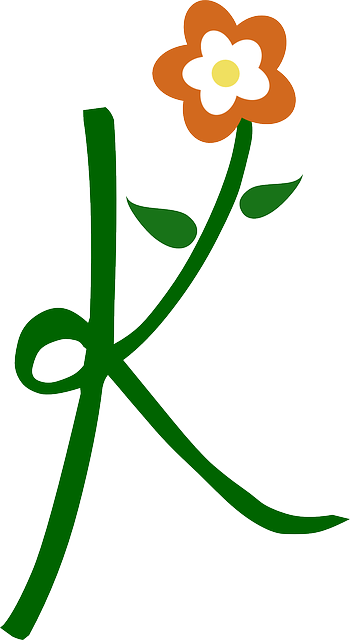
In the vast world of modern conventions, italics play a crucial role in emphasizing book titles. When it comes to formatting writing, using italics serves as a visual cue to distinguish book titles from the surrounding text. This simple yet essential practice not only helps readers easily identify the names of literary works but also enhances the overall aesthetic appeal of the written piece.
To effectively utilize italics for book titles, it’s important to keep a few guidelines in mind. Firstly, titles of standalone books, such as novels, autobiographies, and anthologies, should always be italicized. This includes both fiction and non-fiction works. Italicizing book titles is a universal standard across various writing styles and genres, ensuring consistency in formatting. However, it is worth noting that within the body of the text, the first letter of the first word and any proper nouns in book titles should be capitalized, regardless of whether the original title follows this convention.
Moreover, it’s crucial to distinguish book titles from other types of written works. While italics are employed for books, other mediums, such as poems, short stories, articles, and essays, require alternative formatting. Poems and articles typically utilize quotation marks, whereas short stories and essays generally appear in italics. By adhering to these distinctions, writers uphold clarity and facilitate seamless communication of their ideas. Remember, proper use of italics for book titles not only showcases your attention to detail but also adds a touch of professionalism to your writing style.
As content creators, it is essential to maintain a consistent formatting style throughout our work. By sticking to one formatting style, we not only present a professional and polished image, but we also enhance readability and user experience. Consistency allows readers to focus on the content itself rather than being distracted by inconsistent formatting choices.
One of the main benefits of adopting a consistent formatting style is that it creates a sense of familiarity for your audience. Whether it’s using a consistent font, font size, or line spacing, readers quickly become accustomed to the visual elements of your content. This helps build trust and reliability, making it easier for them to engage with your material.
Moreover, consistent formatting extends beyond just the visual aspects. It also involves maintaining a consistent structure throughout your content. Utilize headings, subheadings, and bullet points to organize your ideas logically. This type of formatting makes it easier for readers to navigate through your content, quickly identify key points, and retain information efficiently. By employing consistent formatting practices, you can create an enjoyable and engaging experience for your audience, increasing the likelihood of them returning for more of your valuable content.
When it comes to emphasizing book titles in your writing, using italics is the recommended approach to ensure clarity and enhance readability. Italicizing book titles not only helps distinguish them from the rest of your text but also adds a professional touch to your writing. By following this convention, you can provide a visual cue to your readers that a specific word or collection of words represents a book title.
Using italics for book titles also helps maintain consistency and uniformity throughout your writing. Whether you are writing an essay, a research paper, or a blog post, it is crucial to adhere to a consistent style guide. In addition to italicizing book titles, remember to capitalize the first and last word, as well as all nouns, pronouns, verbs, adverb, and adjectives in the title. By adopting this approach, you can ensure that your book titles stand out and are easily identifiable to the reader.
In conclusion, italicizing book titles is an integral part of creating clear and visually appealing text. By following the recommended approach, you can effectively emphasize book titles, maintain consistency, and provide a seamless reading experience for your audience. So, whether you are writing a formal academic paper or a casual blog post, don’t forget to use italics to highlight book titles and make them pop!
In conclusion, understanding and adhering to the rules of book title formatting is crucial for authors and publishers alike. By following these guidelines, you can enhance the readability and marketability of your book, making it more appealing to potential readers. Remember, your title serves as a first impression and can greatly impact the success of your work. Therefore, embracing these rules can pave the way for a professional and captivating book title.
Here are a few key takeaways to keep in mind:
- Captivate with clarity: Your title should be captivating while effectively communicating the essence of your book. Keep it short, concise, and avoid vague or misleading phrases.
- Avoid excessive punctuation: While dashes, colons, or parentheses may add emphasis or clarity, excessive use can make your title appear cluttered or confusing. Moderation is key.
- Consistency in capitalization: Pick a style for capitalizing words in your title (such as title case) and stick with it throughout. Consistent capitalization adds a polished and professional touch to your book.
- Be conscious of branding: If you have an established brand or series, it’s important to maintain consistency in your book title formatting. This helps readers recognize your work and fosters a sense of trust and loyalty.
By embracing these rules and paying attention to the finer details of your book title, you can greatly enhance its appeal and increase the likelihood of capturing the attention of your target audience. Remember, a well-formatted title goes hand in hand with a well-crafted story, setting the stage for a successful and memorable reading experience .
Q: What is the correct way to format book titles in a written work? A: The correct way to format book titles in a written work is typically by underlining or italicizing them.
Q: Are there any specific rules for underlining or italicizing book titles? A: Yes, there are rules to follow. The general convention is to underline or italicize longer works, such as novels, textbooks, and anthologies.
Q: Can you provide some examples of longer works that should be underlined or italicized? A: Certainly! Examples of longer works that should be underlined or italicized include books like “To Kill a Mockingbird,” “Pride and Prejudice,” and “1984.”
Q: What about shorter works like poems, short stories, or articles? Should they be treated differently? A: Yes, shorter works are formatted differently. Instead of underlining or italicizing, these titles should be placed inside quotation marks.
Q: Can you give some examples of shorter works that should be placed inside quotation marks? A: Absolutely! Examples of shorter works that should be placed inside quotation marks include poems like “The Raven,” short stories like “The Lottery,” and articles such as “The Benefits of Exercise.”
Q: Are there any exceptions to these formatting rules? A: Yes, there are exceptions. When referring to titles within titles, such as a chapter title within a book, you should surround the inner title with quotation marks while underlining or italicizing the overall book title.
Q: Do these rules apply to all writing formats, like essays, research papers, or emails? A: Indeed, these rules are applicable to various writing formats, including essays, research papers, and even informal emails.
Q: Can you briefly summarize the main rules for underlining or italicizing book titles in writing? A: Of course! The general rules state that longer works like novels should be underlined or italicized, while shorter works like poems or articles should be placed inside quotation marks. When referring to titles within titles, use quotation marks for the inner title and underline or italicize the overall book title.
Q: Where can I find more information on this topic if I need further clarification? A: If you need more information, it is always recommended to consult a reliable writing style guide, such as The Chicago Manual of Style or the Modern Language Association (MLA) Handbook, both of which provide extensive guidelines for formatting book titles.
In conclusion, whether to underline or italicize book titles may seem confusing, but by following the rules, you can ensure clarity and proper formatting in your writing.
Do You Have to Italicize Song Titles in Creative Writing? Essential Tips
When Writing a Book Title: Quotations or Italics? Clear Answers
Leave a Comment Cancel reply
Save my name, email, and website in this browser for the next time I comment.
Reach out to us for sponsorship opportunities.
Welcome to Creative Writing Prompts
At Creative Writing Prompts, we believe in the power of words to shape worlds. Our platform is a sanctuary for aspiring writers, seasoned wordsmiths, and everyone. Here, storytelling finds its home, and your creative journey begins its captivating voyage.
© 2024 Creativewriting-prompts.com

IMAGES
VIDEO
COMMENTS
The answer is: in this case, yes. In other cases, sometimes. It's really not as confusing as it seems. When you are talking about a book series but don't want or need to include the complete series titles for the purposes of your work, you only have to put words in italics that also appear in the book titles. So, because Harry Potter is ...
As a general rule, you should set titles of longer works in italics, and titles of shorter works go in quotation marks. Longer works include books, journals, TV shows, albums, plays, etc. Here's an example of a book mention: Sense and Sensibility, published in 1811, was Jane Austen's first novel. Shorter works include poems, articles ...
When citing a non-fiction book, use the same format as you would for a fictional work. Italicize the book title in the text and the Works Cited entry. Include the author's name, book title (in italics), publisher, year of publication, and medium of publication. For instance:
1. Italicize the title: When citing a book title, make sure to italicize it to distinguish it from the rest of the citation. For example, if you are referencing the book "To Kill a Mockingbird" by Harper Lee, the title should be formatted as To Kill a Mockingbird.
In MLA format, your essay's title should be in title case. That means every principle word— words that aren't articles, prepositions, coordinating conjunctions, or the word "to" paired with an infinitive—is capitalized. The only exception to this is when one of these words is the first or last word in the essay's title.
When Writing the Title of a Book in an Essay: Best Practices Choosing the right formatting for book titles in essays can be tricky. From italics to quotation marks, there are rules to follow. This article will guide you through the best practices for properly incorporating book titles into your writing. Don't let title formatting trip you up - master it with our expert tips!
Use capital letters to write the title of the novel. For example, The Secret Garden by Frances Hodgson Burnett. Use italics and capital letters to write the name of the author and his/her other works mentioned in a book title—for example, Jane Austen's Pride and Prejudice (1813). You should use quotation marks when writing headings of short ...
How to Write the Title of a Book in an Essay. First, remember the general rules of citing book names in academic works. Here's how to cite books in essays: Use capitalization. Every word of a book's name goes in the title case, except prepositions, articles, and coordinating conjunctions.
Learn how to properly write a book title in an essay with this comprehensive step-by-step guide. Master the art of formatting and make your essays stand out.
When citing book titles using MLA style, you need to italicize the title and capitalize all words in the title except conjunctions, articles, and prepositions. For example, if you were citing the book "The Great Gatsby" by F. Scott Fitzgerald, your citation would look like this: Fitzgerald, F. Scott. The Great Gatsby.
In APA style, there should be a colon (:) between the main title and any subtitle. When citing a book title within the text of your paper, use title case and italicize it. When including book titles in your reference list, use sentence case and italicize it. Example 3: Punctuation.
Capitalize the first word of titles of books in papers, the first word after a colon, and all major words. Avoid capitalizing minor words (e.g., articles, prepositions, conjunctions) unless they are the first word of the name or longer than four letters. Always place the book title after the author's name.
Writing effective headings. Although similar, headings are not the same as titles. Headings head paragraphs and help structure a document. Effective headings make your paper easily scannable. Common high level headings in dissertations and research papers are "Methods", "Research results", and "Discussion". Lower level headings are ...
Use quotation marks around the title if it is part of a larger work (e.g. a chapter of a book, an article in a journal, or a page on a website). All major words in a title are capitalized. The same format is used in the Works Cited list and in the text itself. Place in quotation marks. Italicize.
Here's how to write a book title that readers love: 1. Use unique or unusual words. Some ways to do this are: use a thesaurus and combine two words to make a unique word (for e.g. Freakonomics, Spoonbenders). If your main character has a unique name, you can write the name as a book title (for e.g. Frankenstein, Oliver Twist). 2.
Titles should also be specific enough to prepare the reader for your particular argument, so avoid vague titles like "Racism" or "Hope." Also, never turn in a formal essay with a generic title like "Paper #2" and don't use the title of the work you are writing on as your own title like The Great Gatsby. It is often easier to write ...
11. Write a one-word title—the most obvious one possible. 12. Write a less obvious one-word title. 13. Write a two-word title. 14. Write a three-word title. 15. Write a four-word title. 16. Write a five-word title. 17. Think of a familiar saying, or the title of a book, song, or movie, that might fit your essay. 18. Take the title you just ...
Titles should be italicized or enclosed in quotation marks. Titles that are independent and self-contained (e.g., books) and titles of containers (e.g., anthologies) should be italicized. ... The title of a story, poem or essay in a collection, as part of a larger whole, is placed in quotation marks. Dewar, James A., and Peng Hwa Ang. "The ...
Capitalization Rules for Titles: Always capitalize the first letter of the first word and the last word. Capitalize the first letter of each "important" word in between the first and last words. Following are some of examples of real student titles: 1. "Hills Like White Elephants:" A Dance Between Two Lovers. 2.
Here is what you need to keep straight: Titles require special capitalization called title case. Title case requires one to. capitalize the first letter of the first and last words of a title; capitalize the first letter of all verbs; capitalize all words of four or more letters; capitalize the first letter of all other words except a, an, the ...
When you're writing an essay, make sure you italicize the book title instead of underlining, bolding, parentheses, or using quotation marks. Book titles are italicized. If you are using a ...
A: Of course! The general rules state that longer works like novels should be underlined or italicized, while shorter works like poems or articles should be placed inside quotation marks. When referring to titles within titles, use quotation marks for the inner title and underline or italicize the overall book title.
Italicise or Underline Book Titles: The General Rule. Unless you're following a style guide that specifically tells you otherwise, you should generally italicise book titles. This is the rule you'll find in many style guides, including the Chicago Manual of Style, Harvard referencing style and the Modern Language Association (MLA).